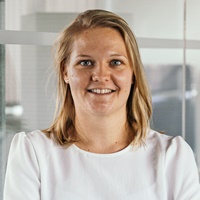Introduction
On April 23, Möbius hosted an inspiring event on New Ways of Working in an hybrid era. We brought leading experts and interested professionals together to discuss the trends and challenges of future workspaces. This blog post summarises the key insights for those who could not attend or guests who wish to revisit the pivotal discussions.
Expert insights on workplace dynamics
Global insights on workplace satisfaction
 Pierrick Masure of Leesman shared global data on how workplace features directly impact employee satisfaction. Key takeaway: in a hybrid world, occupation rate is not the only metric of success. Employee experience should be your main focus.
Pierrick Masure of Leesman shared global data on how workplace features directly impact employee satisfaction. Key takeaway: in a hybrid world, occupation rate is not the only metric of success. Employee experience should be your main focus.
Architectural innovations for better workspaces
Saskia Simon from the Office for Metropolitan Architecture (OMA) showcased how innovative design could create functional and inspiring work environments, emphasising the significance of optimal flows and convivial spaces for enhanced collaboration and innovation.
Adapting to new work models
Natacha Van Haneghem illustrated Fluxys' journey towards modern and activity-based headquarters. She provided actionable insights on effectively managing and supporting a transition towards New Ways of Working.
Redefining public workspaces

Anneleen De Bock discussed the transformation of Ghent’s city hall into a modern, inviting 'Stadskantoor'. This renovation project not only improved the citizens' experience but also created a vibrant and activity-based workspace which encourages dynamic interaction among employees.
Top six insights
1. Home versus office: rethinking utility
Homes often provide better support for knowledge workers than traditional office setups, challenging us to rethink the purpose and utility of office spaces.
2. Satisfaction enablers in workplace design
Key elements such as pride, privacy, collaboration and enjoyment emerged as crucial in creating great work environments. Incorporating these elements can significantly uplift workplace quality and employee satisfaction.
3. The importance of diversity in workspace design
A variety of workspace typologies (such as meeting rooms, collab zones, bubbles, silent zones ...) was shown to boost satisfaction across all metrics, highlighting the necessity for flexibility in office design to accommodate diverse working styles.
4. Cultivating informal interactions
Encouraging casual encounters in office settings fosters a sense of community and spurs innovation, as informal interactions often lead to the exchange of ideas.
5. Effective change management
Investing in robust change management practices including comprehensive training and ongoing support, is essential for a smooth transition to hybrid work models.
6. Prioritising employee satisfaction
Focusing on enhancing employee satisfaction rather than merely maximising office space occupancy leads to more productive and engaged teams.
Conclusion
The insights from this event emphasise a significant shift towards dynamic and employee-centred work environments. This gathering not only highlighted innovative strategies but also inspired attendees to rethink and reshape the future of workplace design and culture.





.png?width=410&height=220&name=employer-experience-zorg-sector-unie-k%20(1).png)



